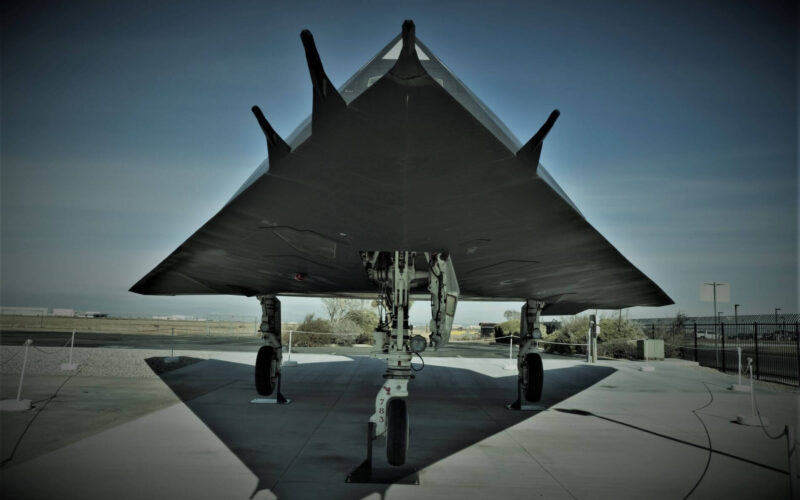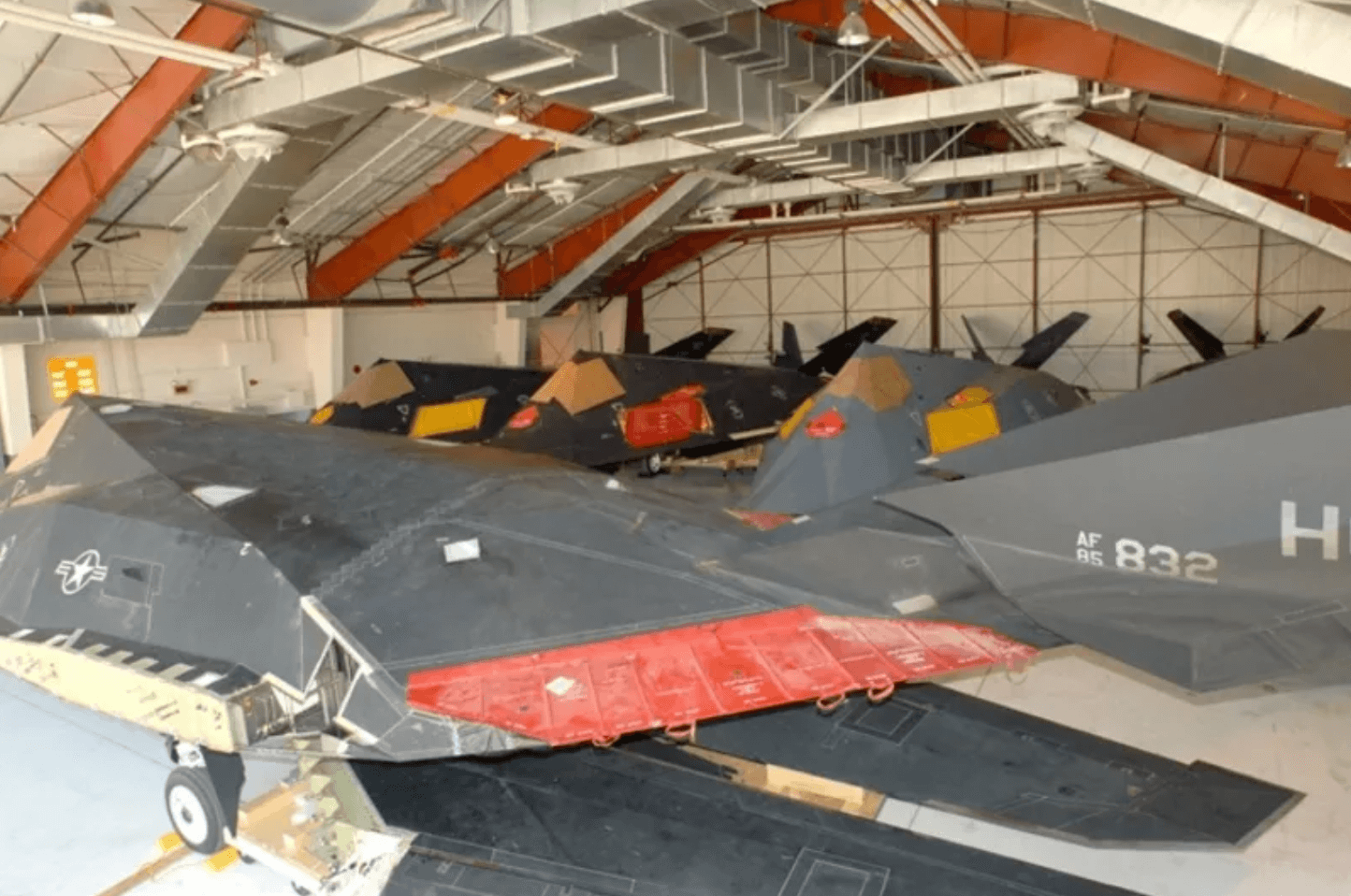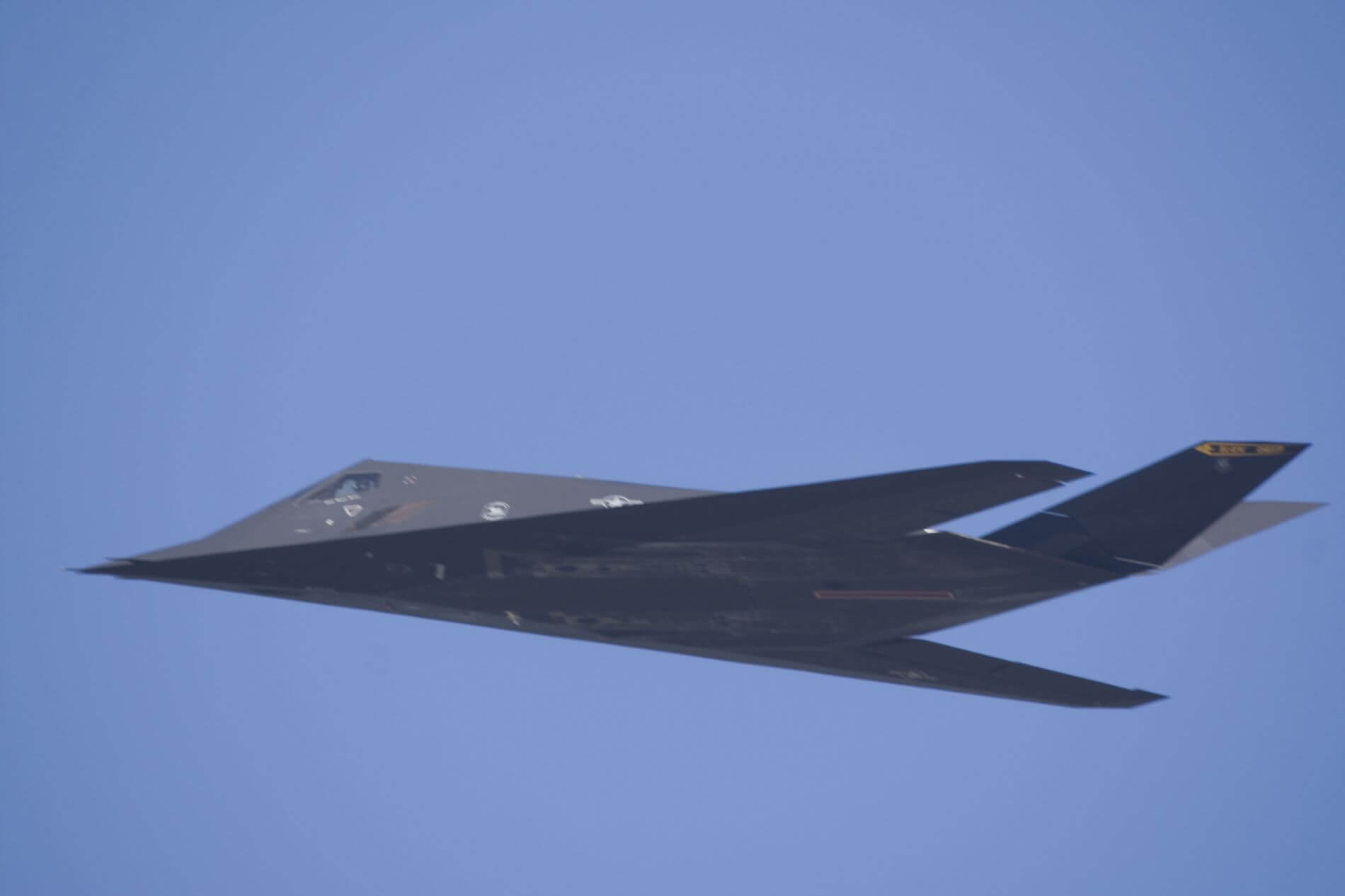Few military planes are as iconic and recognizable as the F-117. Even fewer have such an aura of mystery and secrecy. Despite being over 40 years old and officially retired, the Nighthawk continues to be involved in one secretive exploit after another.
It is the most famous black project ever, therefore it is only fitting that it starts and ends with rumors. Through the 80s and 90s they shrouded the F-117 like nothing else: from the capabilities of the “stealth fighter” (it was not a fighter after all) to its purported “invisibility” (still attributed to stealth jets even today), to UFOs that supposedly accompanied it. Unconfirmed snippets of half-truths stirred imaginations, as the aircraft became a part of the green-lit image of high-tech combat the U.S. was boasting during the Gulf War, and this unmistakable piece of jagged and rough aesthetic of the war of the future.
No surprise then, that many took news of the Nighthawk’s retirement in 2008 with a degree of sadness. The iconic aircraft served for just three decades – two, if we exclude the period before the public reveal – in a world where militaries still wield fleets of bombers dating from the 50s. It was supposed to be this incredible machine of the future, yet almost immediately got replaced by newer, less futuristic aircraft like the F-22.
But then came the twist: as 2010s rolled by, F-117s were popping up here and there, noticed by aviation enthusiasts around various military bases, including but not limited to Area 51. There were reports of them flying training sorties with F-16s, painted in strange camouflages, even deployed to the Middle East. It all fueled a new wave of rumors, no less wild than the one from which the Nighthawk emerged in the 80s.
Nighthawks in storage. (Image: USAF / The War Zone)
Shady experiments
The thing is, while officially retired, the majority of the 51-strong F-117 fleet was never scrapped. Demilitarizing the aircraft is costly and requires dousing them in chemicals to wash off radar-absorbent materials, as well as gutting the airframe and replacing avionics, engines and other classified elements with elaborate mockups. While it was done on a number of occasions for airplanes destined to be transferred to museums, others remained in long-term storage, ready to be either destroyed or repaired and flown again. In 2017 a Congressional mandate to start scrapping them came, saying that four units per year are to be disposed of. But the intention never turned into action.
While at the same time it was stated that a small number of Nighthawks – four, perhaps – will remain airworthy for experimental purposes, later developments show that a lot more of them were flying. Why? Experimentation, of course. It was confirmed in 2019, at the height of speculation, when an Air Force spokesperson admitted to The Drive that yes, the supposed destruction of the fleet is not happening, and that an undisclosed number of F-117s are undertaking undisclosed research activities.
Nighthawk is a perfect platform to do that, mostly because its capabilities are well known. The military will not have to close down the entire state if it crashes in a random nature preserve, and its presence at one or another airbase does not have to be kept in secret. Meanwhile, radar-absorbing coatings, newer and stealthier engine exhausts and other gadgets can be swapped on and off, without the fuss that some yet-unseen X-plane would create.
This might explain the extraordinary appearance of some Nighthawks, such as the one with white wings, photographed by the Combat Aircraft Journal.
Aggressor F-117? Incredible new images revealed – https://t.co/2VHFyeEFAG pic.twitter.com/UFlfg48CPc
— Combat Aircraft Journal (@Combat_Journal) July 14, 2019
Dark Knights and other secrets
Another explanation – highlighted in a tweet above – not as much replaces, but compliments another. Some of the same features – availability and familiarity among others – make F-117s the perfect stand-ins for enemy stealth aircraft in exercises.
The role of aggressor, or “Red air”, is one of the most exotic roles a military unit can take on. Its primary aim is to imitate enemy behavior in a simulated encounter (so-called war game), often making use of foreign-made aircraft and employing unconventional tactics. Both in the past and the present, dedicated units within the U.S. Air Force took on that job, although lately it was mostly relegated to special private companies.
China and Russia, both potential enemies of the U.S., have access to stealth technology. The former is already wielding a fleet of operational stealth fighters, and the latter will likely start deploying theirs soon too. In addition to that, both of them have developed their own stealth attack drones, a task that Iran has been trying to accomplish for a decade as well.
This makes a stealth aircraft an enemy U.S. pilots and radar operators are likely to encounter. Although, reportedly, F-117’s radar-evading capabilities leave a lot to desire in comparison with newer stealth aircraft like F-22 and F-35, it can be flown as an interim measure, before something better takes its job. An ability to repaint the relatively cheap aircraft and otherwise modify it turning its radar signature into an approximate copy of the likely enemy is a big plus.
And while F-117 lacks many features Su-57 or J-20 would display – such as supersonic speed or supermaneuverability – it can still imitate stealthy cruise missiles of the sort Russia is supposedly developing.
One of many F-117s captured by spotters after the supposed retirement. Complete with the mysterious Dark Knights insignia – possibly, belonging to the dedicated aggressor squadron. (Image: Arthur Eugene Preston / Shutterstock)
There is simply no other platform of similar features and availability in the U.S. arsenal, at least until early F-22s and F-35s start ageing. Therefore, it is only natural for Nighthawks to be exploited in this way. And while there is nothing particularly unexplainable about their missions, the cloud of mystery they generated may have more to do with the aircraft itself than with what they are doing.
This is equally true with the redeployment rumors. Between 2016 and 2019, a charade of unconfirmed stories appeared, stating that F-117s were conducting bombing raids in Syria, based on accounts of unidentified witnesses and no hard evidence. It was an amalgam of misinterpretation and misidentification – quite likely, other aircraft were mistaken for Nighthawks.
Yet again, it was the result of the reputation of the F-117. It seems, the Nighthawk simply cannot keep away from being a super-spreader of rumors – a fitting end, considering the beginning of its story. It is only likely that in several decades, as all F-117s slowly get grounded and dispersed across museums, someone somewhere will still report them flying, conducting covert operations of unidentified purpose.



